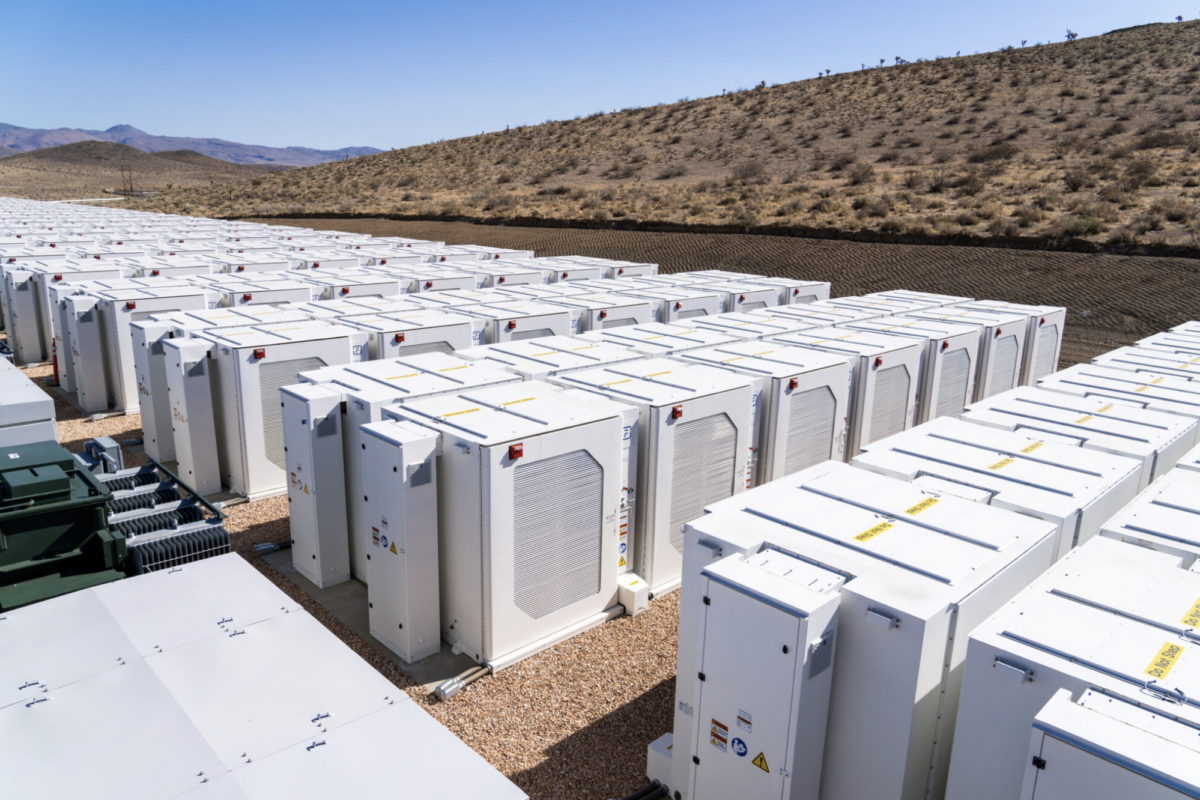Every element in the Earth's crust is finite, and some are rarer than others. With lithium-ion batteries a vital enabler of many national decarbonization efforts, the pivotal nature of the element could jeopardize the global energy transition.
From mid-century onwards, near-comprehensive recycling, vehicle-to-grid applications and battery substitutes must be developed, according to a report by Peter Greim, Solomon Asfaw and Christian Breyer, of the Lappeenranta-Lahti University of Technology (LUT), in Finland, and the University of Augsburg, in Germany, which appeared in the academic journal Nature Communications.
“The present production trend of lithium batteries shows that in the short-term the supply and demand are well balanced,” said Asfaw, a post-doctoral researcher at LUT. “The sustainability of the long-term supply of lithium, however, and consequently maintaining the energy transition at high levels of electrification, particularly in the transport sector, is at risk. Lithium battery demand is the main driver of the observed deficit.”
EVs as solution and culprit
Lithium-ion batteries experienced a compound annual growth rate of 25% from 2015-18, driven primarily by an uptick in electric vehicles (EVs). According to the LUT-Augsburg report, 70% of the devices shipped in 2018 were for EV use, up from 43% three years earlier.
The popularity of EVs has been reflected in mining activity, with Greim et al reporting demand for lithium in 2015 stood at around 34.6 kilotons (kt). Around 60% of that volume was for non-battery use, with a quarter of the overall demand for consumer electronics and traditional battery markets, 14% for EV deployment and just 1% for stationary energy storage. Last year, global lithium demand had reportedly jumped to 49kt, with 60% for use in battery-related products.
With around a billion light-duty vehicles on the roads, and the number set to rise to 3 billion by 2050, electrifying the global fleet could put a huge squeeze on lithium supply. LUT professor of solar economy Breyer wrote: “Choosing public transport, sharing rides with colleagues – these are all our individual choices that reduce the dependence on private, light-duty vehicles. We need incentives to support these choices in all parts of the globe.”
Similarly, according to the LUT-Augsburg research, power consumption is set to rise in tandem with global population growth to 11 billion people by mid-century. The United Nations has estimated the world will require 40 MWh of primary energy per capita by that date, ensuring a need for 200 TWh of battery capacity this century. The 50 years after 2050 could see a fourfold spike in power consumption.
How much is left?
The LUT-Augsburg researchers examined various models to determine how much lithium remains on Earth, with estimates varying from 30-95 million tons (Mt) as the United States Geological Survey, for instance, indicates total resource stock of 80 Mt.
The researchers modeled four lithium supply scenarios based on the estimates. In their worst-case forecast, no additional lithium resources will be discovered. That would leave humanity 26 Mt of lithium. The other scenarios assumed remaining stock of 41, 56 and 73Mt with the LUT-Augsburg group noting assumptions of 80 Mt and 95 Mt of remaining lithium lacked sufficient rationale and were dismissed.
The group also modeled eight future demand scenarios, factoring in variables including EV adoption, battery second-life uses and recycling and vehicle-to-grid integration. Using the two sets of scenarios, the researchers came up with 18 outcomes, each of which highlighted a different year when lithium supplies would run dry.
Supply and demand would stay balanced for the next decade in all scenarios, the LUT-Augsburg group found, and supply would even exceed demand up to mid century but from that point on, shortages will kick in.
The scenario which assumes 73 Mt of lithium supply left, best policies (recycling, V2G, second-life) implemented and around 3 billion EVs on the road sees lithium fully depleted a few years beyond 2100. If the same policies and number of cars were matched with just 26 Mt of lithium, but recycling efforts would only grow slowly, battery manufacturers will close shops even before 2040.
Fewer cars
“Contrary to other assessments, the result shows that Li availability will become a serious threat to the long-term sustainability of the transport sector unless a mix of measures is taken to ameliorate the challenge,” stated the study.
Rising global power demand over time will render the use of second-life EV batteries for stationary storage inevitable, the researchers predicted, but even with that extension of battery lifetimes, alternative device chemistries such as vanadium redox flow and sodium-sulfur will have to enter use to keep pace with stationary storage demand.
“We should also find ways to substitute demand for batteries by developing sustainable transportation options that do not require batteries,” said Breyer, with wider railway use and car-sharing schemes among the alternatives to private car use.
While synthetic fuels will offer value in long-distance marine transportation and aviation, the researchers stated, they were discounted in the consideration of personal transport because of a relative difference in system efficiency compared to lithium-ion battery power for the segment.
Recycling must also play a central role in avoiding a lithium supply crunch, according to the LUT-Augsburg research, with the 45% of lithium-ion batteries recycled today set to rise to 99% by 2050, based on recent technological data which suggested the element's recycling efficiency is around 95%.
Energy storage
This content is protected by copyright and may not be reused. If you want to cooperate with us and would like to reuse some of our content, please contact: editors@pv-magazine.com.




The experts told us we were out of natural gas once too. not too be flippant but by the time we have real concern and other deposits and extraction methods are found and innovated around, we’ll be on to the next technology. Anyone still worried about coal reserves?
Have you actually looked at the size of Earth’s crust lately? It’s literally astronomical in girth. There is, and never will be a lithium shortage – unless industry is not allowed to dig it up. Granted, there needs to be enviro acceptable means of extraction
It’s time to consider bring back the open air trolleys from the late 1800s. But running off electricity or hydrogen.
https://i.ytimg.com/vi/VDnFZHkeczo/maxresdefault.jpg
I feel Li-Ion or any other Battery Operated Vehicles have been “overhyped” as the “dooms day” solution against Pollution.
Well funded, “special interest” papers have just added to this “myth and invincibility of Lithion-Ion Batteries. They ALL IGNORE the Replacement Cost of these or other Batteries (once or several times during the life of the vehicles) and associated Pollution and Waste Handling Societal Liabilities in the future (like Nuclear Waste… but not as severe that lasy for 100,000+ years…. here we go again..).
Modified ICE Engines that use Air, Hydrogen, Ammonia (using abundant Air, Water only) or other similar “high energ density” Zero Pollution and even “newly designed” engines using Compressed Air (yes CAV’s) that are sustainable and WITHOUT pollution are there….. but ignored as another waste holocaust… like nuclear waste is being created for ALL…. by Batteries…. with or without Lithium.
Recycling must also play a central role in avoiding a lithium supply crunch, according to the LUT-Augsburg research, with the 45% of lithium-ion batteries recycled today set to rise to 99% by 2050, based on recent technological data which suggested the element’s recycling efficiency is around 95%.
yeah, probably I agree with your lithium supply the last duration. Thanks for the article.
It seems and maybe I’m wrong that research on the earths supply of lithium Is rather vague. My question is can our geologist determine how much and how long will the lithium last on this planet?
How long will lithium last now that every car manufacturer and global entity wants to accelerate the change to electric vehicles? If a battery weighs like 1000 lbs, how much of that is lithium? Is any of this even sustainable?
There is 98 lbs of lithium in a Tesla. Batteries will last on average 5 yrs. Recycled lithium batteries do not have the MHa that new lithium have which make them unsuitable for energy storage for cars. All current indicators show the demand for lithium will far outstrip the supply. This article eludes to the very serious problem. Lithium is not sustainable and the future for alternative measures of storage is bleak.
does anyone know what “Greim et al” is? is it a mining plant? I cant find anything about it.
Kayseri de yapılacaklar arasında biz varız